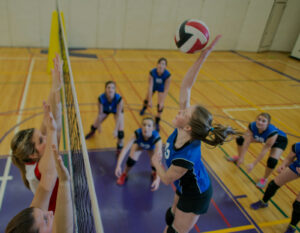Shoulder Evaluation: Why It Matters

Shoulder Treatment & Training
The shoulder joint is one of the most complex joints in the body. It has a wide range of motion, multiple muscle attachments, and plays a crucial role in both mobility and stability. A lot is happening at the shoulder! It is also heavily influenced by factors such as thoracic spine mobility, neck muscle tension, posture, sports, and daily activities. Even though the anatomy is similar across individuals, each person has a unique presentation, strength level, and specific needs for their shoulder. For example, some may have a full range of motion but require more stability, whereas others may have limited mobility yet be strong and stable overall. This is why the approach to treating a young volleyball athlete differs significantly from that of someone in their 60s.
 Stability
Stability
A volleyball athlete requires a great degree of range of motion to be able to draw their shoulder high and back to hit the ball with great speed. In addition to having a large range of motion, we want to ensure that their shoulder is very strong and stable in those vulnerable positions. For that reason, a strength program would be prescribed that includes a multitude of overhead pressing and pulling exercises (Facepull to Overhead Press), rotator cuff stability exercises (Banded Shoulder External Rotation), and extra upper back strengthening (ITYs Exercise). These few exercises added into an athlete’s regular program would allow them to continue competing at a high capacity for a full day of matches and reduce the risk of shoulder problems.
 Mobility
Mobility
For an individual in their 60s who simply wants to feel strong for daily life activities, playing with their grandchildren, and the occasional pickleball game may need to place a much bigger emphasis on mobility and overall joint range of motion. One way to do this is to emphasize and improve thoracic spine mobility through exercises like Half Kneeling Thoracic Rotation and Sidelying Thoracic Rotations with a Foam Roller, which will affect shoulder range of motion. Additionally, performing exercises that take the shoulder through a large range of motion, such as a Shoulder CARs or Facepull to Overhead Press, can, over time, help to improve strength and range of motion. Finally, incorporating manual therapy into treatment to address any tissue limitations can be a great way to improve range of motion. This will make mobility training and strengthening that much more effective.
Shoulder Evaluation
So, how do we approach the shoulder joint? The first step is evaluation. One of our providers will assess both passive and active range of motion, test muscle strength, and conduct in-depth orthopedic evaluations to examine specific tissues and structures. Based on the diagnosis, treatment may include manual therapy, soft tissue work, take-home exercises, and/or a structured strength program. Treating the shoulder is not a one-size-fits-all approach, but our goal remains the same: to reduce pain, build necessary strength and muscle mass to enhance performance, and help you return to your sport or daily activities as quickly as possible.
 262-373-9168
262-373-9168



